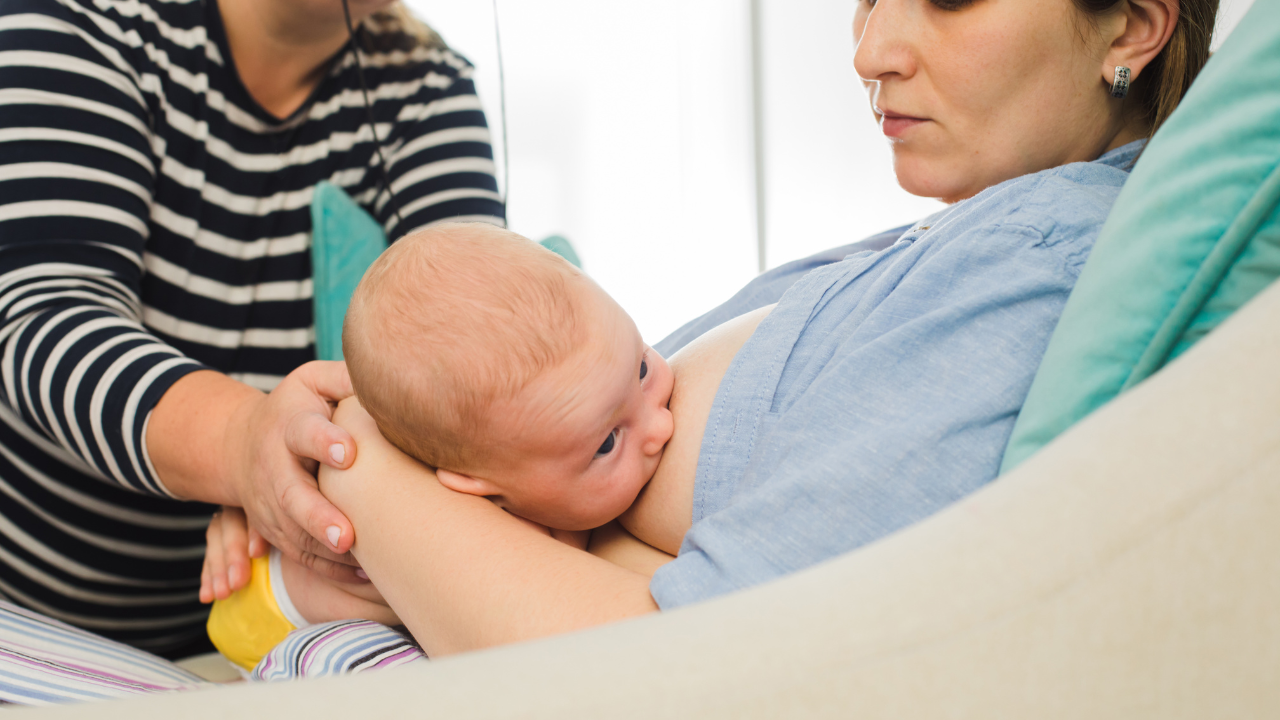If you’re breastfeeding and your nipples feel like they’ve been through a cheese grater, you’re not alone. Sore, cracked nipples are one of the most common issues new moms face in the early weeks of nursing. They’re painful, frustrating, and sometimes enough to make you want to throw in the towel. But here’s the good news: they’re usually fixable.
This article will walk you through what’s causing the pain, how to treat it, when to get help, and most importantly—how to keep going without wincing every time your baby latches.
What Do Sore or Cracked Nipples Actually Look Like?
Let’s clear this up first: a little tenderness in the first few days? Totally normal. But if your nipples are stinging, splitting, or bleeding, that’s something else entirely.
Common signs:
- Nipples that look red, dry, or shiny
- Visible cracks or open sores
- Bleeding or scabbing
- Flattened or pinched shape after feeding
- Sharp, burning, or aching pain during or between feeds
- White patches or blanching (could signal thrush or vasospasm)
- Shiny, flaky skin or red rash around the nipple area

Why Is This Happening?
In almost every case, the culprit is a poor latch. If your baby isn’t taking enough of the areola into their mouth, your nipple ends up rubbing painfully against their hard palate—and that friction adds up fast.
Other causes might include:
- Tongue-tie or lip-tie in a baby
- Engorgement or overfull breasts making latching harder
- Incorrect pumping technique or flange size can cause pain after pumping
- Skin conditions like eczema, dermatitis, or herpes
- Fungal infections like thrush can cause sore, cracked nipples
- Milk blisters (also called blebs) or blocked nipple pores
- Inflammation of Montgomery tubercles (those tiny bumps on your areola)
- Vasospasm or Raynaud’s syndrome (where blood vessels constrict painfully)
It’s rarely “just your skin being sensitive.” Most of the time, there’s a fixable reason—and fixing it can mean a world of difference.
Can You Keep Breastfeeding With Sore, Cracked Nipples?
Short answer: yes, you usually can. In fact, continuing to breastfeed (with a better latch) is often part of the healing process.
Bleeding nipples? It might look scary, but a little blood in your milk is not harmful to your baby. Even if the cut is infected, you can usually keep breastfeeding.
If the pain is too intense, try starting on the less sore side or hand-express a bit of milk to soften the breast before latching. You can also take a short break by pumping—but make sure the pump is set up properly to avoid more damage.
Pro tip: When unlatching, gently insert a clean finger into the corner of your baby’s mouth to break the suction. This protects already sore nipples from extra trauma.
How to Treat Sore or Cracked Nipples
Here’s what actually helps:
1. Get help with the latch.
This is the big one. A lactation consultant can watch a feed, assess your baby’s latch, and help you adjust positioning. Small tweaks often make a huge difference.
2. Breastmilk: the magic healer.
After each feed, express a drop of breastmilk and gently rub it onto your nipples. Let it air dry. Breastmilk has natural antibacterial and healing properties.
⚠️ Important: If you suspect thrush (burning pain, shiny skin, white patches on baby’s tongue), avoid using breast milk for healing—yeast feeds on the sugar in milk.
3. Skip the harsh stuff.
Avoid soaps, alcohol-based wipes, or scented lotions on your nipples. These can dry and irritate the skin.
4. Try a nipple balm or lanolin.
These help keep the area moist and reduce friction. Some moms also swear by coconut oil or hydrogel pads.
5. Keep the area dry between feeds.
Change nursing pads often, wear breathable bras, and go topless when you can.
6. Consider tools—wisely.
- Nipple shields: Can reduce pain during feeds and protect healing skin. Use short-term, and only alongside latch correction.
- Breast shells: Create air space between nipple and bra, promoting healing. But prolonged use can lead to plugged ducts or irritation.
7. Watch for signs of infection.
Redness, heat, swelling, or pus? Call your doctor. Infections can lead to mastitis, which needs medical treatment.

How to Prevent Sore, Cracked Nipples
The best cure is prevention, right? Here’s how to reduce your risk:
- Learn good latch technique early (baby’s mouth wide, lips flanged, more areola than nipple in)
- Don’t wait too long between feeds
- Use the correct pump flange size
- Avoid over-washing or scrubbing your nipples
- Gently break the suction before unlatching
- Wear bras made from breathable fabrics like cotton
- Avoid breast pads with plastic liners
- Skip perfumes, powders, or harsh soaps on your breasts
- Minimize the use of pacifiers and artificial nipples in the early weeks
The first week or two is often the toughest, so this is when support makes the biggest difference.
Sore, cracked nipples & When It’s Just Too Much
If you’re crying through every feed, feeling resentful, or totally dreading nursing—it’s okay to pause and regroup. Talk to a lactation consultant or your healthcare provider. Sometimes, pumping while you heal or even switching to donor breast milk or even formula for a few days is what your body (and mind) needs. There’s no shame in that. Fed is best, and your well-being matters too.
Final Thoughts
Most moms who face this early challenge are able to get past it with the right support and information.
Don’t tough it out in silence. With a few small changes and the right help, you can get back to feeding your baby without fear.
Need support? Reach out to a lactation consultant, join a breastfeeding support group, or talk to your healthcare provider. You’ve got this.
References
- Cleveland Clinic – Cracked Nipples (Nipple Fissures) – General overview, causes, prevention, and treatment of cracked nipples.
- NHS (UK National Health Service) – Sore or cracked nipples when breastfeeding – Trusted source for signs, causes, and prevention.
- Northwestern Medicine – Management of Sore Nipples – Covers bleeding nipples, latch issues, and when to get help.
- Australian Breastfeeding Association – First Aid for Sore Nipples – Offers detailed home treatment tips and prevention strategies.
- The Breastfeeding Network (UK) – Moist Wound Healing Factsheet – Discusses healing approaches, pros and cons of creams, and evidence-based advice.


